The meadows and prairies in southern Canada are blooming!
At the Canadian Wildlife Federation we’ve been busy experimenting by creating native meadows for pollinators at three sites in eastern Ontario.
All our sites are on roadsides or right-of-ways. These locations offer ideal low-growing places to provide additional habitat for pollinators. Together with our partners — HydroOne, Lanark County and the National Capital Commission — we wanted to share with you the following recipe for a native meadow:
Step #1: Select a site
Native meadows thrive in full sun. Sites can be anywhere from dry to moist, but thanks to all the rain this year, we’ve discovered that it’s easiest to work with sites that are at least dry by late spring! Sites with very few invasive plants (e.g., Wild Parsnip and Reed Canary Grass) are also easier to prepare for seeding.
Step #2: Prepare the site
Warning: This can be very time-consuming! To give native plants the best chance of survival, we needed well-prepared seed beds that were as weed-free as possible.
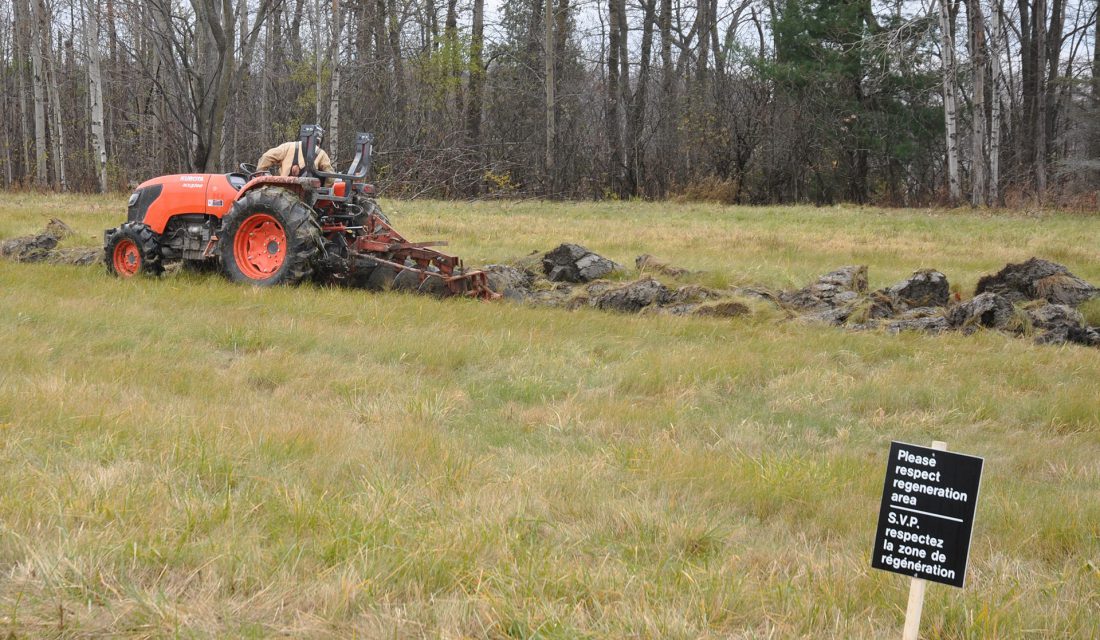
As part of our project, we’ve experimented with a number of methods for removing the competition:
- Tilling
- Planting oats to shade out the weeds
- Spraying herbicides
We are also planning to prepare some sites over several seasons. By later this year, we hope to report which method was most successful at reducing weed competition and allowing the native species to thrive. We’ll continue to monitor this over the long term.
Step #3: Order native seed
Wet vs. Dry Ingredients
The “ingredients” for a meadow differ depending on each site. At our moister sites, we included the seeds of pollinator plants that like “wet feet,” such as Joe-Pye Weed and Boneset. For drier sites, the mix included plants like Pearly Everlasting and Woodland Sunflower.
Common Ingredient
We included Common Milkweed seeds at every site because this species can grow in a wide range of areas and is the host plant for Monarch Butterflies. It’s also an excellent nectar source for many insects.
Grasses to Wildflowers Ratio
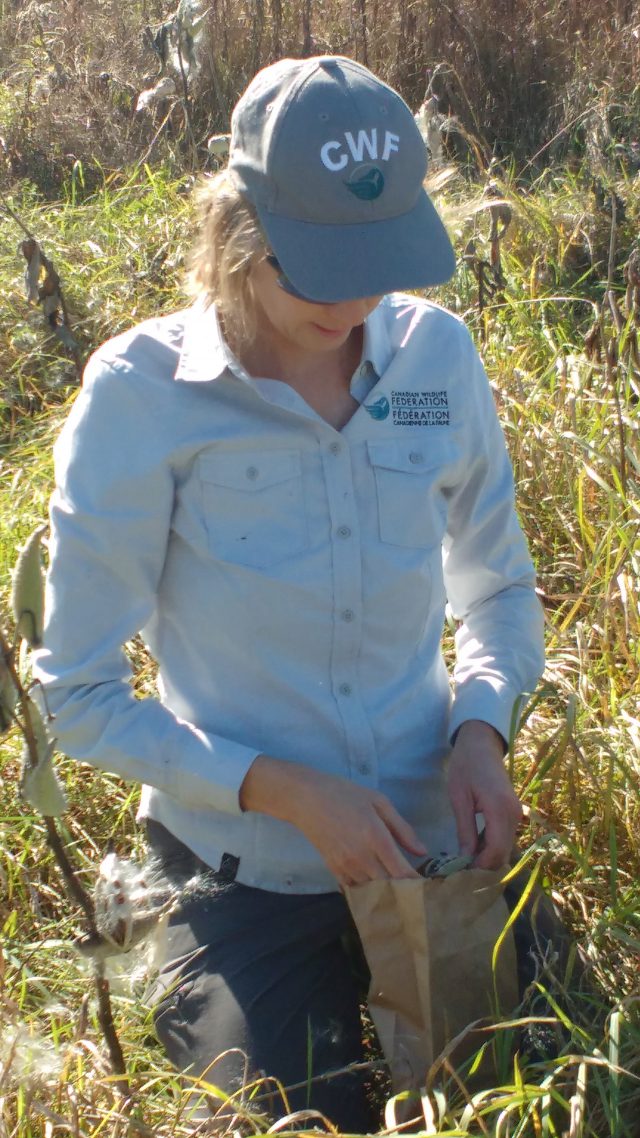
All our mixes include around 40 per cent native grasses (which add nest sites for pollinators) and 60 per cent wildflowers (for a range of nectar and pollen). To find a seed supplier, consult CWF’s online database of native plant suppliers. We also collected several species locally last fall. This is a really fun activity and brought our mix for each site up to around 50 species. For more information, the Xerces Society has an excellent free download on collecting native seed.
Step #4: Weigh and mix
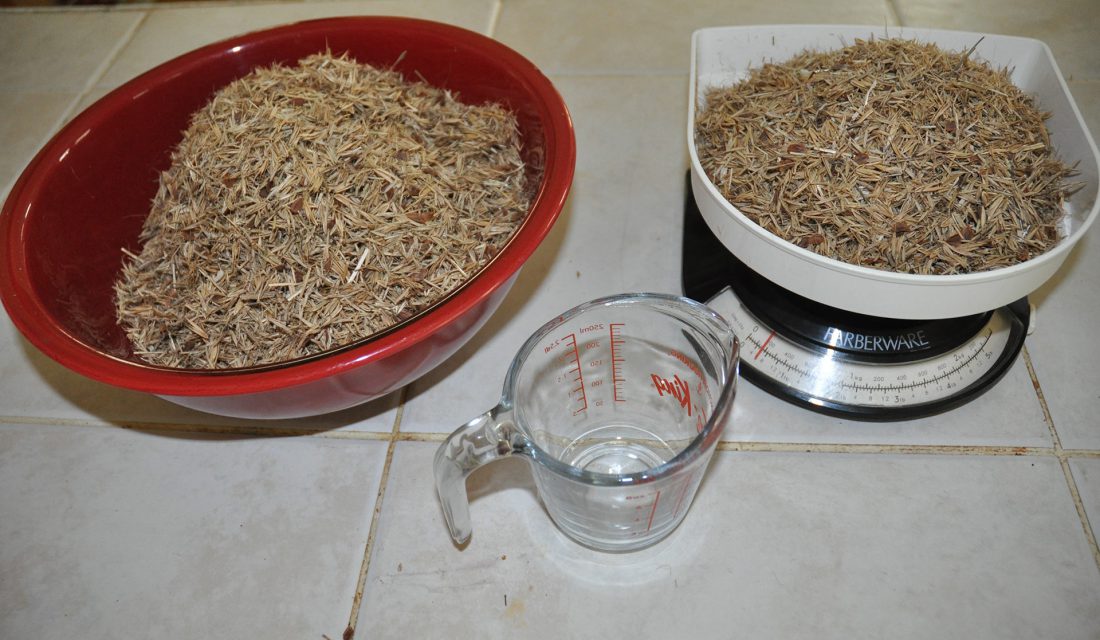
This part really is a lot like baking. Because native seed is expensive, we wanted to use exactly the right amount for each site and no more. The correct amount of seed was weighed according to the area of each site.
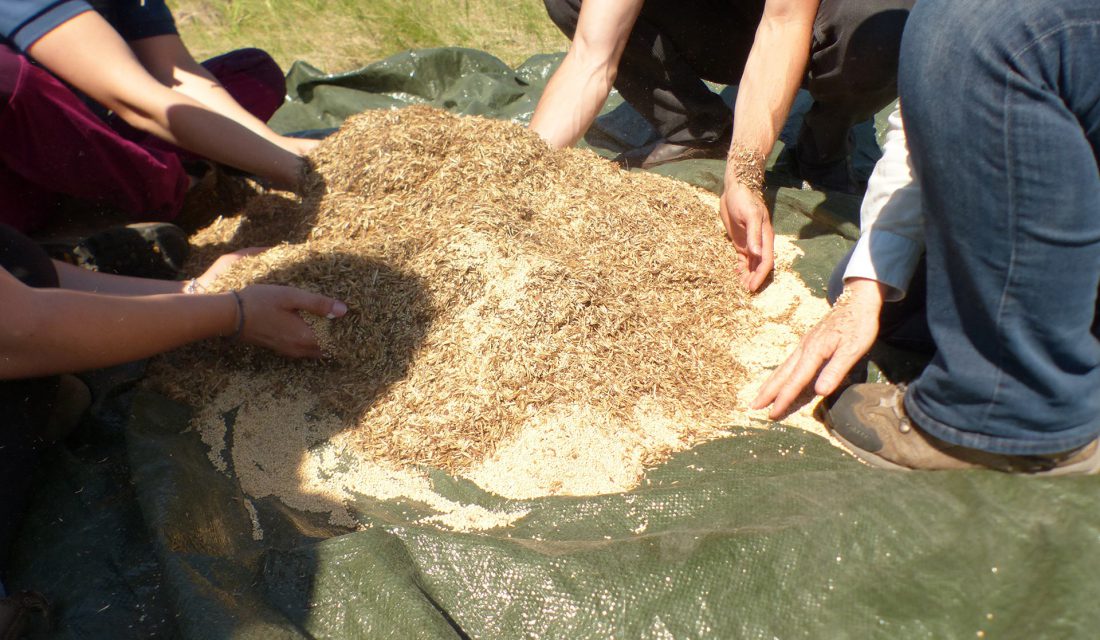
In the field, we mixed the native seed with a cover crop (either oats or millet). The cover crop has two functions. First, it thins out the native seeds and helps to spread them more evenly. Second, the crop will come up and help shade the young native plants for the first year, before being killed by frost. By next spring, the native seedlings will be ready to survive on their own.
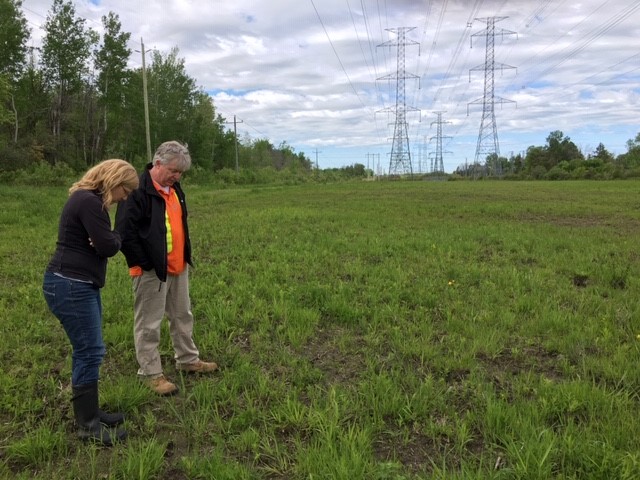
Step #5: Add a crew with enthusiasm
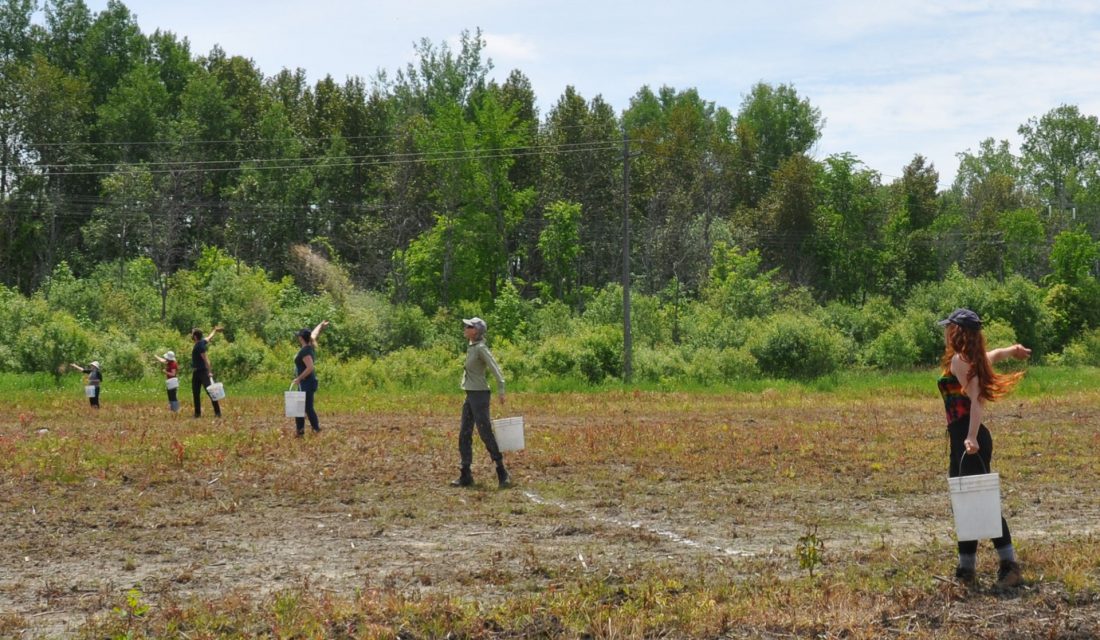
This is the fun part. Order some sunshine and gather a crew. While it can feel somewhat daunting to arrive at a large site, we were surprised by how quickly we finished seeding. With eight keen staff and volunteers, we seeded a 1.5 hectare (three acre) site in just a couple of hours. We walked grid lines in both directions, flinging our mix widely.
Our goal was not to coat our sites in seed, but to “seed the seeders” – that is, give enough space to each plant to flower and fill the meadow over the next few years. We seeded in late spring, but fall can also be a great time to plant native meadows.
Step #6: Add patience in large quantities, and stand back
Just as with baking, waiting for results might be the hardest part. In this case, we have to wait months and maybe even a few years to see some species. For the time being, our work is done.
The rest is up to nature.
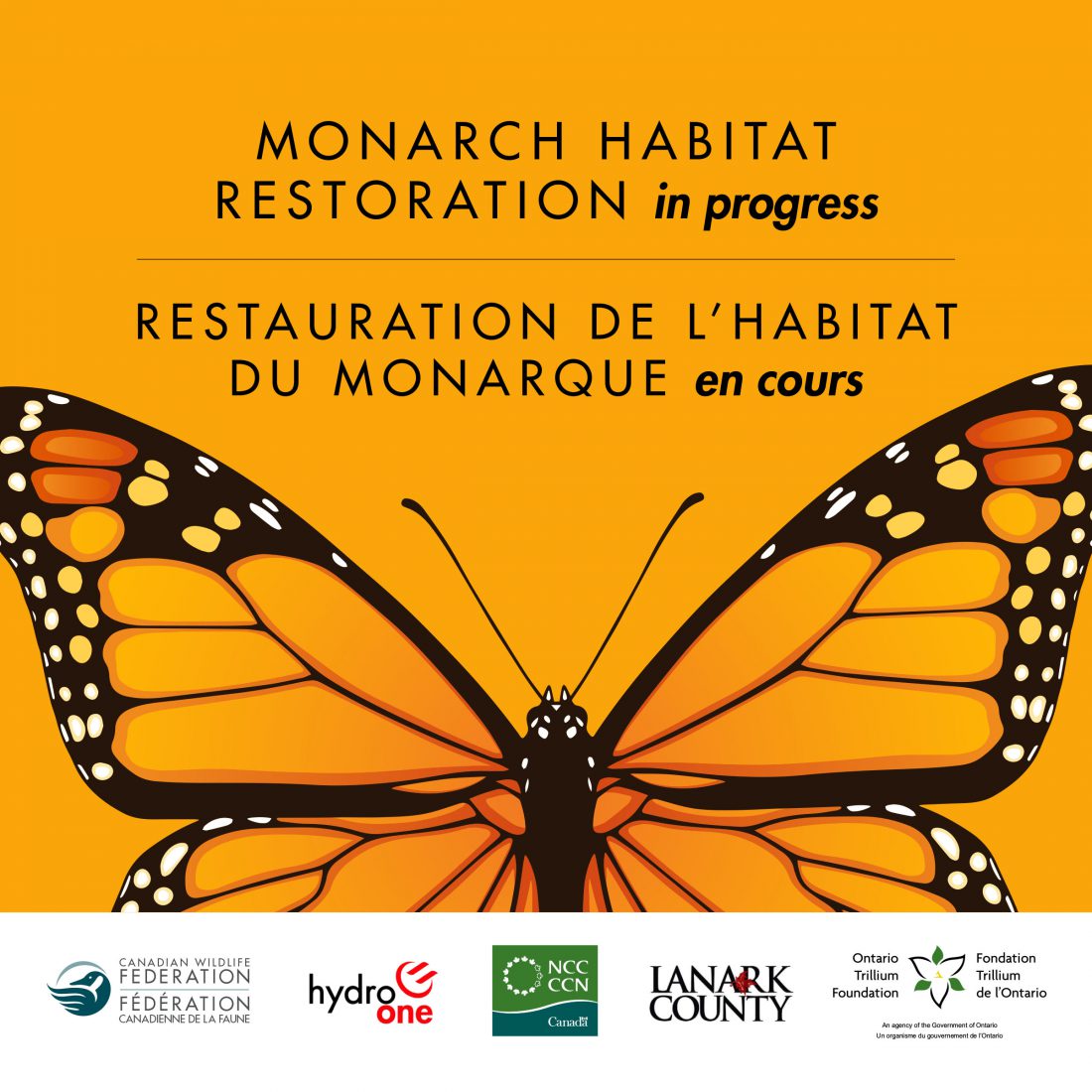
We are proud to announce that over the past month, CWF and partners have followed this recipe and planted acres of roadside and utility corridor native pollinator habitat at different sites in eastern Ontario. A huge thanks to staff at HydroOne, Lanark County and the National Capital Commission who have worked so hard to make this pilot project possible, and to the Ontario Trillium Foundation for providing funding.
Watch for updates as the season unfolds!

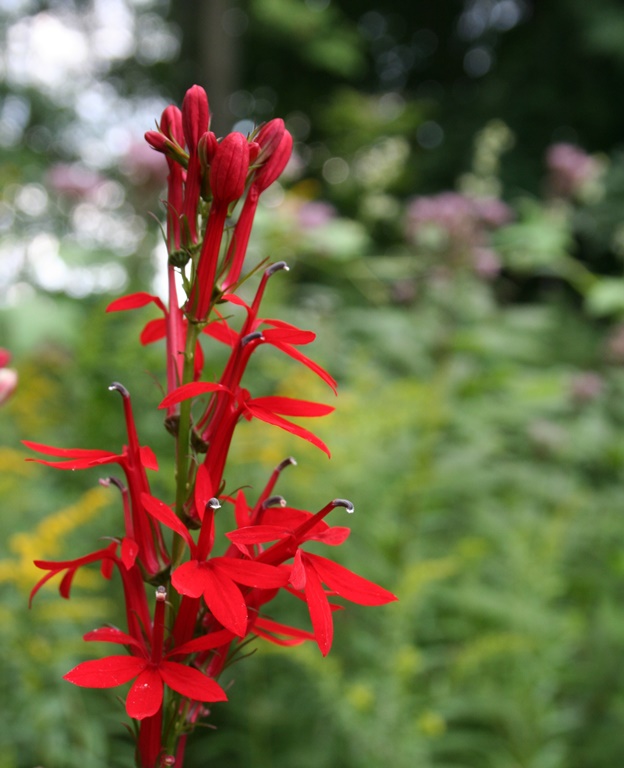
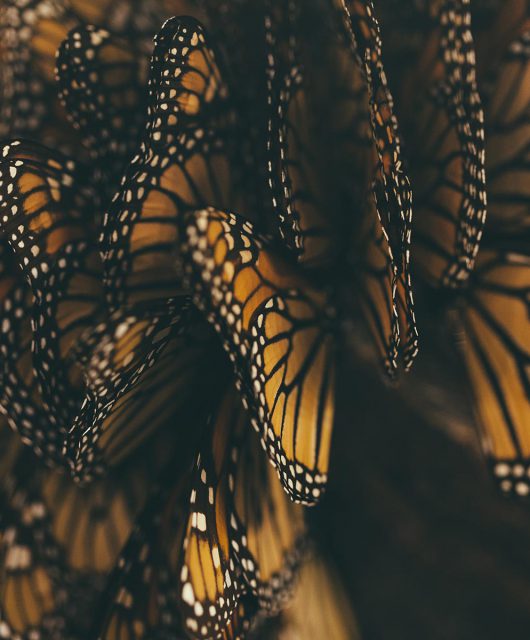

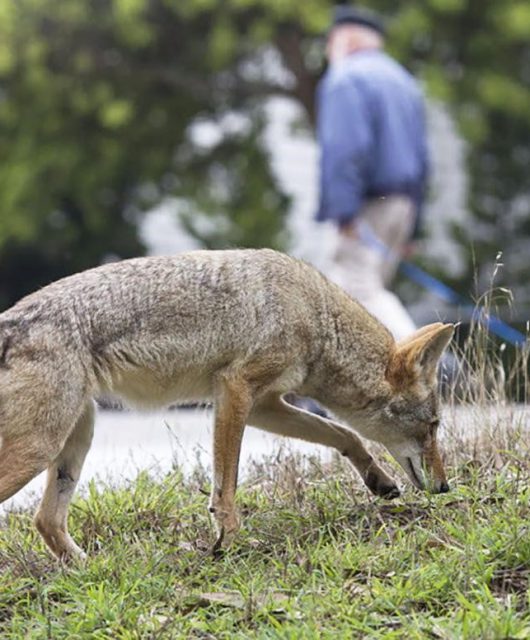
2 comments
We have planted milkweed plus meadow species. What a huge success, last year we released 220 Monarch butterflies, of those 100 were tagged and 120 were not. This year, we have 65 hanging in chrysalids in our sunroom and another 80 in various stages of development. Neighbours and friends were so excited to see the caterpillars and butterflies they asked us for milkweed. We started, this spring, over 150 plants from seed and have given them all away, awesome.
Wow, this is amazing! Thanks for the comment, Diane.